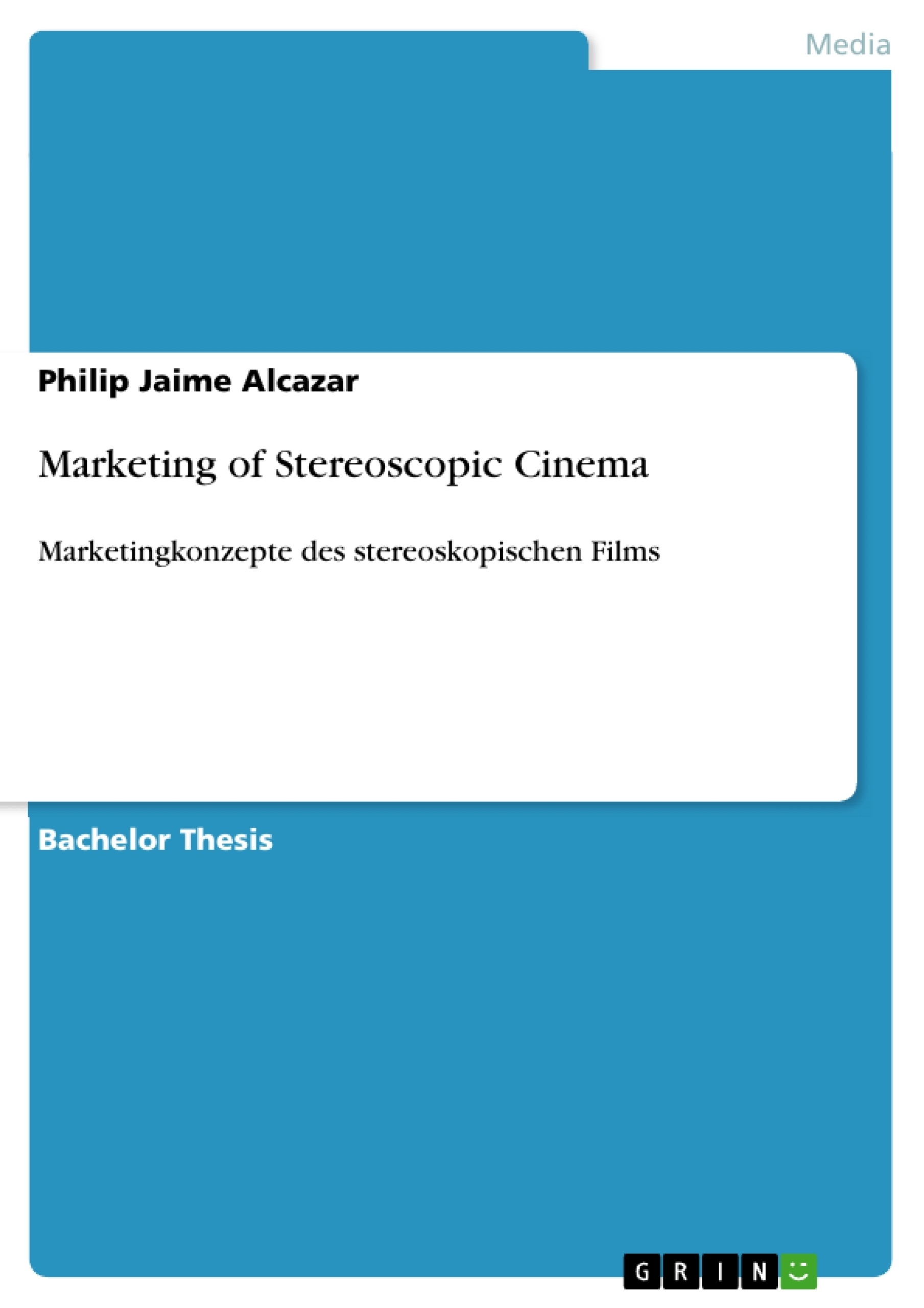With the rise of Internet platforms providing both legal and illegal file sharing utilities, media companies – especially the ones focusing theatrical cinema markets – are facing new problems and difficulties to remain merchantable in opposition with their online competition.
With the beginning of the new century, the number of sales, as to say the worldwide number of cinema attendances, experienced an ongoing stagnation or even a decrease. In order to cope with this challenge, international film production companies and cinema chains are challenged to develop new strategies if they mean to endeavor market changes.
One possibility to attract a larger audience to the cinemas could be the usage of stereoscopic 3D technology, due to the lack of an online substitute. This phenomenon is not new. When, in the 1950s, television started to become part of the average households and cinema attendance numbers collapsed, 3D films experienced a heyday.
The task of this research is to compare the former boom with today's trend and to evaluate whether the stereoscopic technology is a proper tool to enhance sales in terms of cinema attendance for international media companies.
Table of Contents
1 Introduction
1.1 Background information
1.2 Problem Statement
1.3 Research question
1.4 Methodology and structure
2 Historical Overview
2.1 TheConceptandOriginsofStereoscopy
2.1.1 The Discovery of the Stereoscopic Effect
2.1.2 Dissemination of Stereoscopy Through 3D Photography
2.2 TheDevelopmentofStereoscopicCinema
2.3 3D Cinema on the Rise
2.3.1 NaturalVision
2.3.2 Bwana Devil Points the Way
2.4 The Golden Age-3D'sFirstEconomicBoom
2.4.1 FourYearsofEconomic Exploitation
2.4.2 TheDeclineofStereoscopy
3 Today’s Trends
3.1 The Current Renaissance
3.2 The Influence ofDigital 3D on the Market Structure
3.2.1 Digital 3D as Leverage to Digitize Distribution
3.2.2 3D Television
3.3 The Commonalities and Differences between The Golden Age and the Current Renaissance
3.3.1 Competition through Substitute Products
3.3.2 Successful Ignition
3.3.3 Distributional Challenges
3.3.4 QualityDifferences
3.3.5 PersistanceofStereoscopy
4 International Marketing Strategy for the Usage of 3D Films
4.1 The Exploitation Windows
4.2 IncorporationofSteroscopyin theMarketingInstruments
4.2.1 The4PsoftheInternationalMovieMarketingMix
4.2.2 StandardizationVersusAdaptation
5 Conclusion
Bibliography
Literature
Motion Pictures
Movie Posters
- Quote paper
- Philip Jaime Alcazar (Author), 2012, Marketing of Stereoscopic Cinema, Munich, GRIN Verlag, https://www.grin.com/document/210841
-

-

-

-
Upload your own papers! Earn money and win an iPhone X. -

-
Upload your own papers! Earn money and win an iPhone X. -

-
Upload your own papers! Earn money and win an iPhone X. -

-
Upload your own papers! Earn money and win an iPhone X. -

-
Upload your own papers! Earn money and win an iPhone X. -

-
Upload your own papers! Earn money and win an iPhone X. -

-
Upload your own papers! Earn money and win an iPhone X. -

-
Upload your own papers! Earn money and win an iPhone X.

